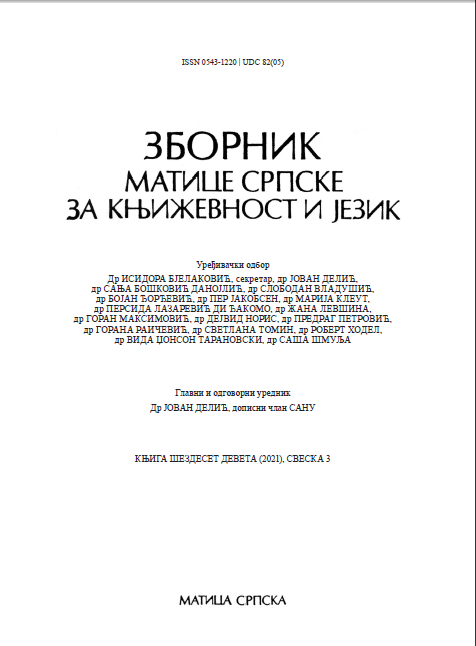СТВАРНОСТ И ФИКЦИЈА У ОПИСУ СМРТИ ДАВИДА АЛБАХАРИЈА
REALITY AND FICTION IN DESCRIPTION OF DEATH BY DAVID ALBAHARI
Author(s): Jovan L. GavrilovićSubject(s): Serbian Literature
Published by: Матица српска
Keywords: David Albahari; metafiction; surfiction; reality; fiction; writer; reader; language
Summary/Abstract: A product of Albahari’s close adherence to the poetics of postmodernism, the use of metafiction in Description of Death simultaneously draws and blurs the line between reality and fiction, never concretely discerning the two, but rather questioning both their singular natures and those same natures in relation to each other. The story Description of the death of Ruben Rubenović, former fabric merchant serves as a prime example of linguistic metafiction, wherein the autoreflective instances focused on the powerlessnes of language staunchly represent the view of language as a purely fabricated entity, completely void of the ability to derail the eponymous death. The stories Essay and Cinema both utilize several levels of fictionality. The autoreflective, metafictional instances serve as implications that the plot that they are ruminating about is wholehartedly fictitious. However, by incorporating several film characters that are without a doubt presented as fabrications, Albahari forms a whole new level of fiction – one that is fictitious in relation to the non-film characters. At the same time, by placing himself – Albahari the writer – in the position of a character easily discernable from that of Daniel the writer, Albahari’s texts become complicated in the sense that there is now present a whole new layer of the duality of reality and fiction – one that is as close to real life as the film characters are to pure fiction. In doing so, Albahari creates a sort of hierarchy of reality and fiction, in which the film characters represent the purest form of fiction, owing to the fact that the characters of the stories acknowledge them as such. Next, the characters themselves – although real from the point of view of the film characters – become fictitious in relation to Daniel, who reveals himself as the author of the stories in which he serves as the protagonist. Finally, Albahari himself forms the highest, least fictional level of the hierarchy, denoting Daniel as a fictional character from his own view. The entire duality of reality and fiction is therefore relativized: depending on the point of view, most parts of the hierarchy can be viewed both as real and fictional, proving Albahari’s ability not only to meticulously follow the postmodern poetic, but to question it as well, ironically making him all the closer to the paradigm of the postmodern writer.
Journal: Зборник Матице српске за књижевност и језик
- Issue Year: 69/2021
- Issue No: 3
- Page Range: 749-763
- Page Count: 15
- Language: Serbian

